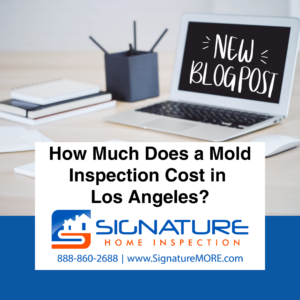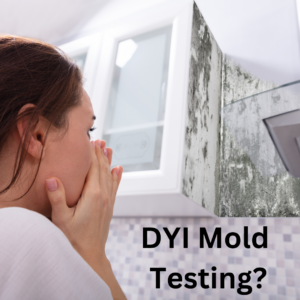Mold inspections are essential to maintaining a healthy living or working environment, especially in humid regions like Los Angeles. If left unchecked, mold can cause serious health problems and damage your property. But how much does a mold inspection cost in Los Angeles? This blog post will provide an in-depth understanding of the costs associated with mold inspections in Los Angeles.

How Much Does a Mold Inspection Cost in Los Angeles?
The Importance of Mold Inspections
Before discussing the cost, it’s crucial to understand why mold inspections are necessary. Mold is a type of fungus that thrives in damp and humid conditions. It can grow on various surfaces, including walls, floors, and ceilings. Prolonged mold exposure can lead to health issues such as allergies, asthma attacks, and other respiratory problems.
The risk of mold growth is high in Los Angeles, where the climate is often warm and humid. Regular mold inspections can help detect any signs of mold growth early on and prevent potential health risks and property damage.
Factors Influencing Mold Inspection Costs
Several factors influence the cost of mold inspections in Los Angeles. These include:
1. Property Size: The more extensive your property, the more time it will take for a thorough inspection and, hence, higher costs.
2. Location: Travel time may be factored into the cost depending on where you live in Los Angeles.
3. Extent of Mold Infestation: If there’s already visible mold growth or a strong, musty smell indicating severe infestation, additional tests may be required, which could increase costs.
4. Type of Testing: The type of testing performed also affects the price – surface testing is generally less expensive than air testing.
Average Cost for Mold Inspections in Los Angeles
The average cost for professional mold inspections in Los Angeles varies widely based on the abovementioned factors. However, homeowners should expect to pay between $200 and $600 for a standard mold inspection. This price typically includes a visual inspection of the property, air or surface sampling, lab analysis of the samples, and a detailed report of the findings.
The cost can be $1,000 or more for more significant properties or extensive mold infestations. It’s also important to note that this cost is for the inspection only. If mold remediation is required, that will be an additional expense.
Choosing a Mold Inspection Company
When it comes to mold inspections in Los Angeles, choosing a reputable company is essential. Look for companies with certified inspectors with experience dealing with different types of mold. Ask about their testing methods and make sure they provide detailed reports.
Remember that the cheapest option may not always be the best one. A thorough and accurate mold inspection can save you money in the long run by preventing costly property damage and health issues.
Conclusion
Mold inspections are an investment in your health and property. While costs can vary based on several factors, homeowners in Los Angeles should expect to pay between $200 and $600 for a professional mold inspection. By choosing a reputable company and addressing any signs of mold early on, you can protect your home and health from potential harm caused by mold infestations.

